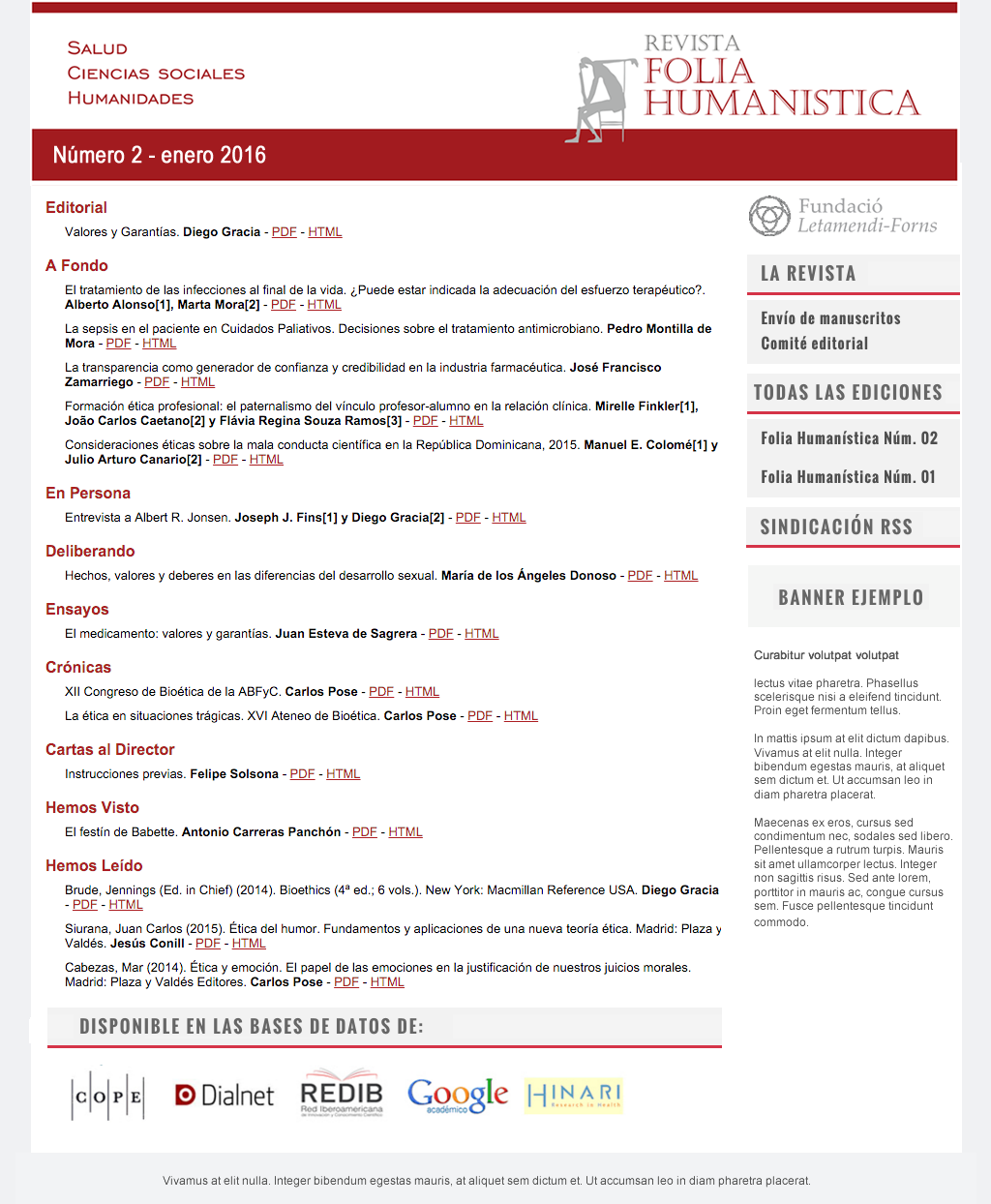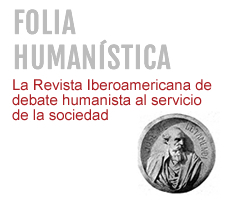¿Diagnosticar es estigmatizar?
DOI:
https://doi.org/10.30860/0094Palabras clave:
Estereotipos, trastornos del neurodesarrollo, prejuicios, neurodiversidad, estigma, adaptación psicosocial, medicalizar, igualdad de oportunidades, modelo de vida natural, modelo adaptativoResumen
La neurodiversidad y determinados trastornos mentales pueden tener consecuencias en la igualdad de oportunidades y en la aceptación social. Un diagnóstico precoz puede mejorar la adaptación psicosocial y la calidad de vida. Sin embargo, para lograrlo, debemos vencer cierta reticencia profesional y ciudadana, justificada por el miedo a estigmatizar o patologizar conductas limítrofes con la normalidad. Educadores y profesionales de la salud no deberíamos dar por supuesto que pacientes y familiares comprenden el significado y el valor que aporta un buen diagnóstico a la calidad de vida. Demostrar la eficacia de las intervenciones basadas en evidencias puede allanar el camino a una mayor precisión y aceptación en el diagnóstico de trastornos mentales y del neurodesarrollo.
Citas
American Psychiatric Association DSM-5. Manual diagnóstico y estadístico de los trastornos mentales Ed. Médica Panamericana Madrid 2018. ISBN: 9788491103721.
DSM-5. Material complementario. Entrevista de formulación cultural y módulo suplementario. Accesible en (verificado 20/01/2023): https://www-medicapanamericana-com.sire.ub.edu/materialesComplementarios/DSM-5/cap/2/7/DSM5-MedidasEvaluacion-Entrevista-formulacion-cultural-(EFC).pdf. Modulo suplementario: https://www-medicapanamericana-com.sire.ub.edu/materialesComplementarios/DSM-5/cap/2/7/DSM5-MedidasEvaluacion-Modulos-Suplementarios.pdf
World Health Organization. International Classification of Diseases for Mortality and Morbidity Statistics (11th Revision) (ICD-11). WHO, 2018 [en línea] [consultado el 21/01/2023]. Disponible en: https://icd.who.int/browse11/l-m/en.
VV.AA. Protocolos diagnósticos y terapéuticos en Pediatría de la Asociación Española de Pediatría (AEP). Disponible en: https://www-aeped-es.sire.ub.edu/protocolos.
Carballal Mariño M., Gago Ageitos A., Ares Alvarez J., del Rio Garma M., García Cendón C., Goicoechea Castaño A., Pena Nieto J. Prevalence of neurodevelopmental, behavioural and learning disorders in paediatric primary care. Anales de Pediatría (English Edition), Volume 89, Issue 3, September 2018, Pages 153-161.
Borrell, F., “La hipótesis de una vida natural”, en: Folia Humanística, 2017; 5: 32-41. DOI: http://dox.doi.org/10.30860/0023. Accesible en (verificado 20/01/2023): https://revista.proeditio.com/foliahumanistica/article/view/1186.
Ortega, F. The Cerebral Subject and the Challenge of Neurodiversity. BioSocieties 4, 425–445 (2009). Disponible en: https://doi.org/10.1017/S1745855209990287.
Ismail FY, Fatemi A, Johnson MV. Cerebral plasticity: Windows of opportunity in the developing brain. Eu J Paediatr Neurol. 2017;21:23-48.
Robert D. Austin and Gary P. Pisano. Neurodiversity as a Competitive Advantage Why you should embrace it in your workforce by. Harvard Business Review. May–June 2017 issue (pp.96–103). Disponible en: https://hbr.org/2017/05/neurodiversity-as-a-competitive-advantage?autocomplete=true.
Bosch R, Pagerols M, Rivas C, Sixto L, Bricollé L, Español-Martín G, Prat R, Ramos-Quiroga JA, Casas M (2021). Neurodevelopmental disorders among Spanish school-age children: prevalence and sociodemographic correlates.Psychol Med. 2022 Oct;52(14):3062-3072. Pag. 1–11. Disponible en: https://doi.org/10.1017/ S0033291720005115.
Carballal Mariño M., Gago Ageitos A., Ares Alvarez J., del Rio Garma M., García Cendón C., Goicoechea Castaño A., et al. Prevalencia de trastornos del neurodesarrollo, comportamiento y aprendizaje en Atención Primaria. An Pediatr (Barc). 2018;89:153-161.
VV.AA. Recomanacions del Comitè de Bioètica de Catalunya davant el rebuig dels malalts al tractament Aprovat en la sessió plenària de 9 de març de 2010 del Comitè de Bioètica de Catalunya. Generalitat de Catalunya. Barcelona 2010. Accesible en (verificado 20/01/2023): https://canalsalut.gencat.cat/web/.content/_Sistema_de_salut/CBC/recursos/documents_tematica/recomanacions_davant_rebuig.pdf.
Austin, J.L. 1962. How to do things with words. London: Oxford University Press. Accesible en (verificado 20/01/2023): https://www.academia.edu/36270217/Austin_1962_how_to_do_things_with_words.
Taylor H Vestergaard MD. Developmental Dyslexia: Disorder or Specialization in Exploration? Front. Psychol. 13:889245. June 2022. Disponible en: https://doi.org/10.3389/fpsyg.2022.889245.
Furczyk, K., Thome, J. Adult ADHD and suicide. ADHD Atten Def Hyp Disord 6, 153–158 (2014). Disponible en: https://doi.org/10.1007/s12402-014-0150-1.
Roy, M; Dillo, W; Emrich, H M; Ohlmeier, M D. Asperger´s Syndrome in Adulthood. Dtsch Arztebl Int 2009; 106(5): 59-64. DOI: 10.3238/arztebl.2009.0059.
Fritz K, Russell AMT, Allwang C, Kuiper S, Lampe L, Malhi GS. Is a delay in the diagnosis of bipolar disorder inevitable? Bipolar Disord. 2017 Aug;19(5):396-400. Disponible en: https://doi-org.sire.ub.edu/10.1111/bdi.12499.
Asma S, Gabriel R. The Emotional Mind: The Affective Roots of Culture and Cognition. Harvard University Press. Cambridge, (2019). ISBN 9780674980556.
Borrell i Carrió, F. (2019). Pensamiento crítico en los grados de ciencias de la salud. La importancia de educar la percepción como vía para que el estudiante adquiera criterio. Folia Humanística, (11), 44–64. Accesible en: (verificado 20/01/2023): https://revista.proeditio.com/foliahumanistica/article/view/1120.
Mas Salguero MJ. ¿Neurodiversidad o trastorno del neurodesarrollo? Rev Pediatr Aten Primaria. 2022;24:235-9.
Doran E., Henry D. Disease mongering: expanding the boundaries of treatable disease Internal Medicine Journal 38 (2008) 858–861.
Descargas
Publicado
Cómo citar
Número
Sección
Licencia
Derechos de autor 2023 Folia Humanística

Esta obra está bajo una licencia internacional Creative Commons Atribución-NoComercial-CompartirIgual 4.0.
La Revista Folia Humanística se adhiere a Creative Common en la modalidad: Reconocimiento – NoComercial – CompartirIgual (by-nc-sa): No se permite un uso comercial de la obra original ni de las posibles obras derivadas, la distribución de las cuales se debe hacer con una licencia igual a la que regula la obra original.








